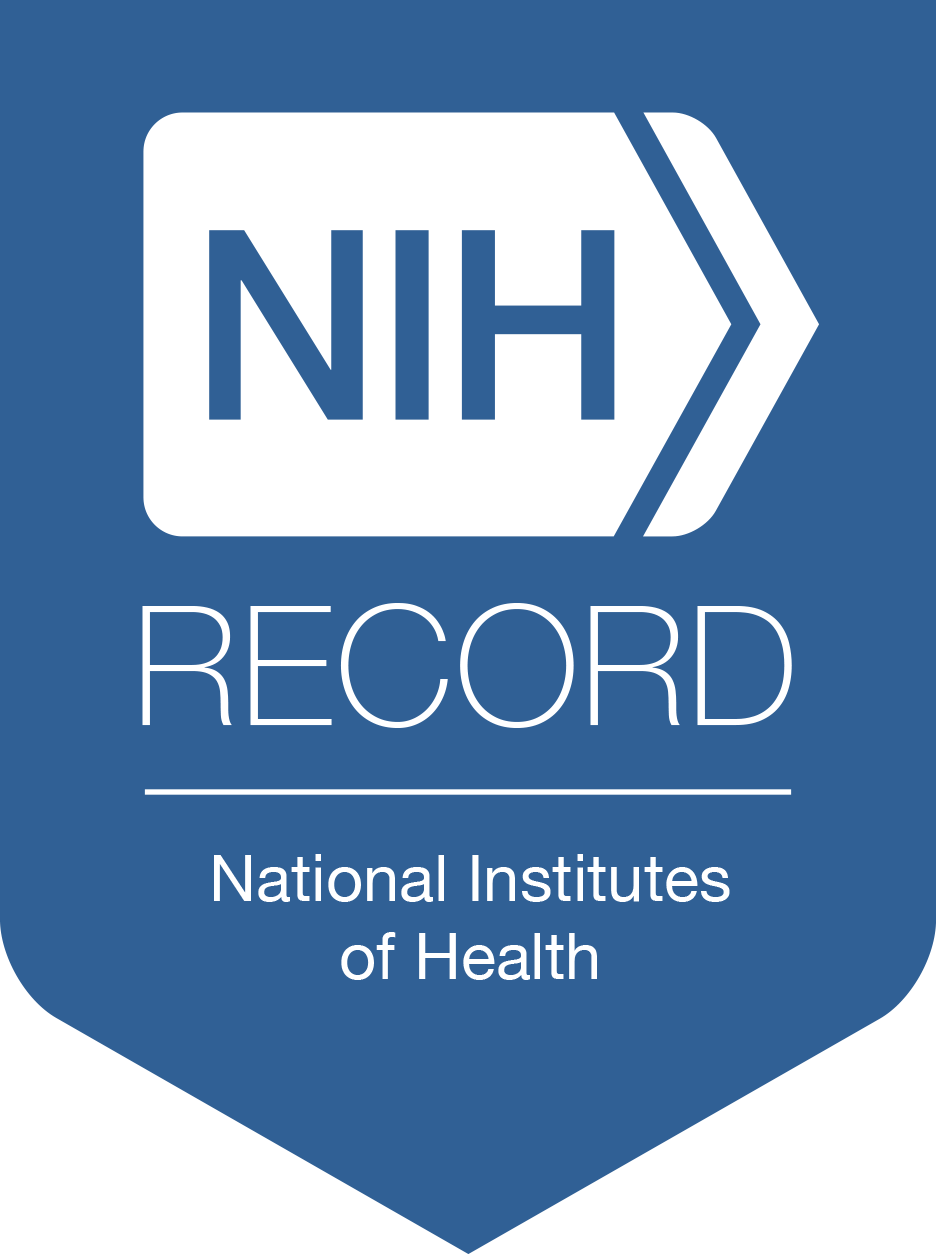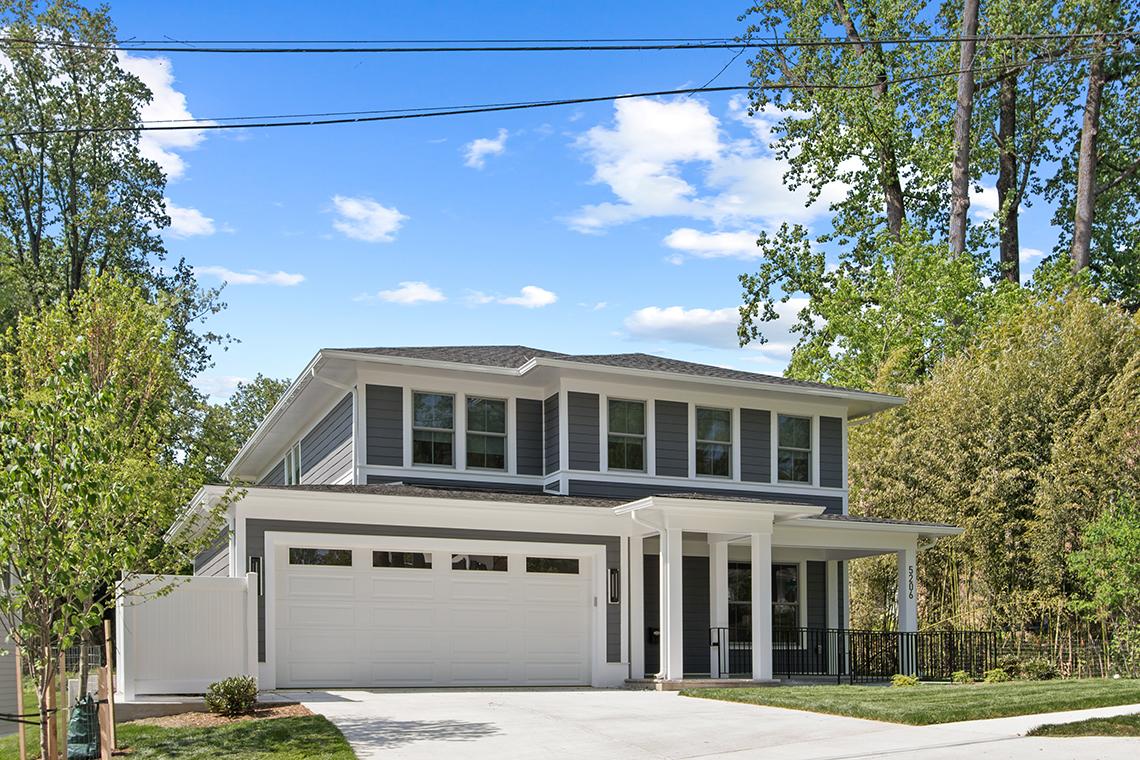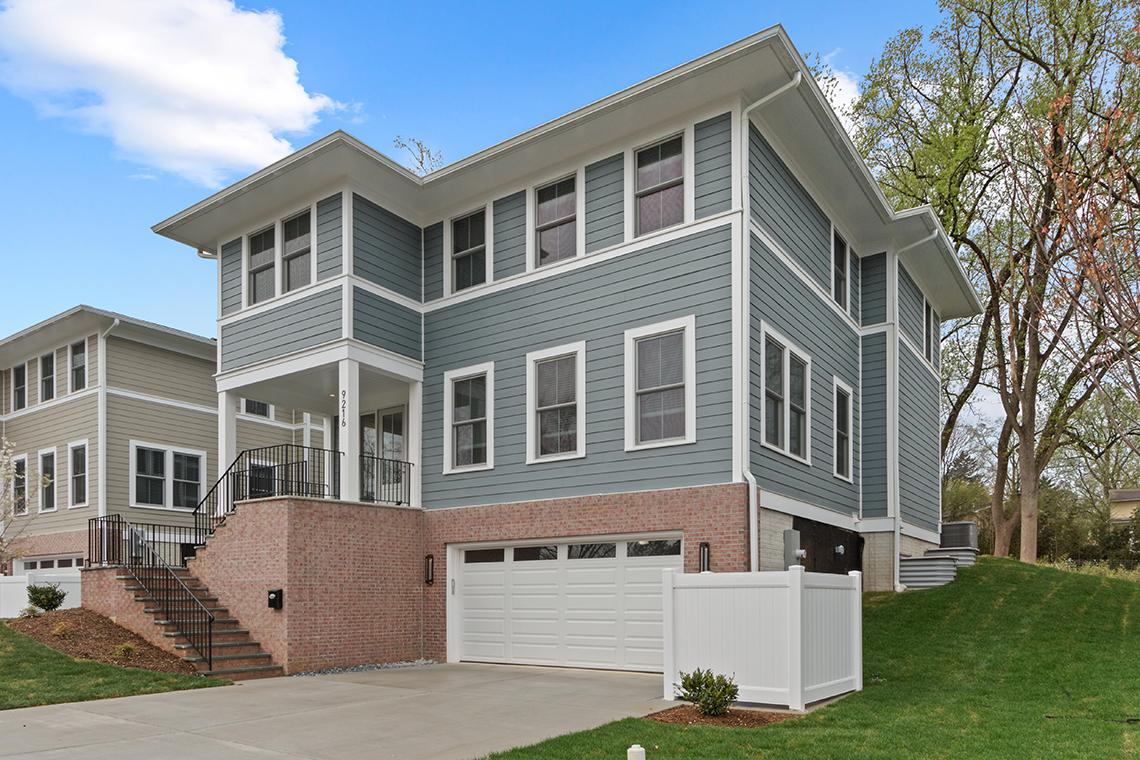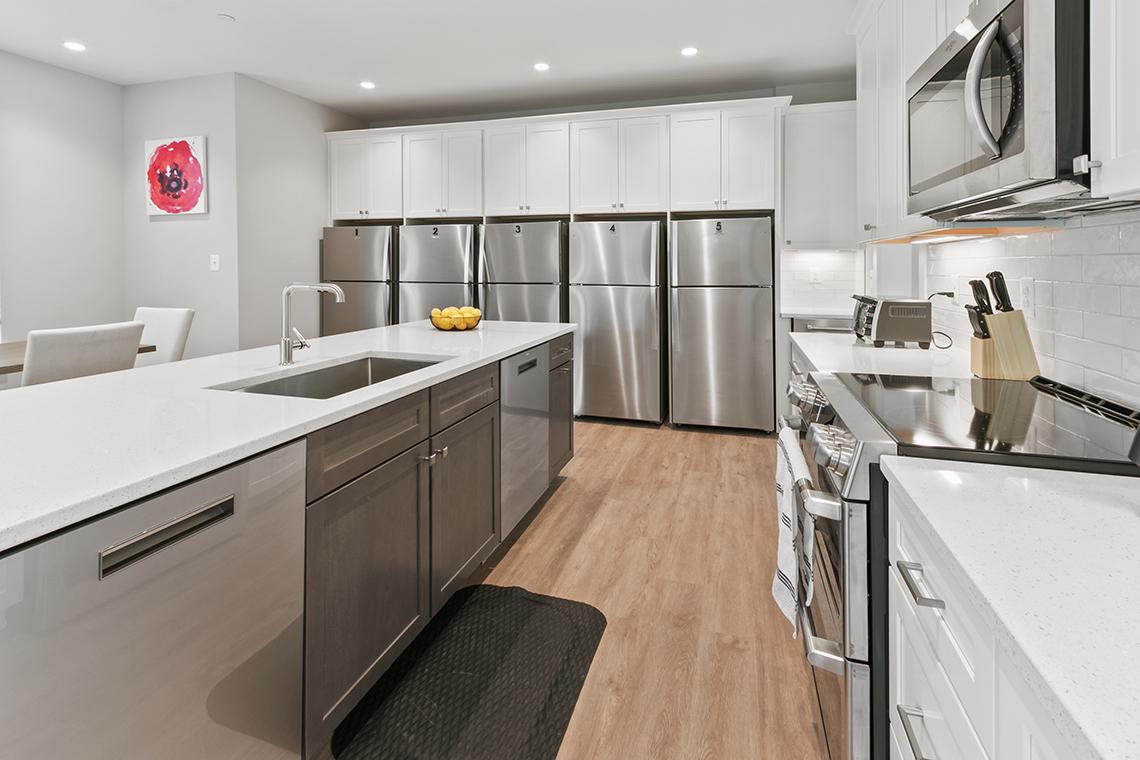FAES To Open Additional Residences for NIH Fellows, Trainees
The Foundation for Advanced Education in the Sciences, Inc. (FAES) is nearing completion on seven additional residences for NIH trainees near NIH’s Bethesda campus.
“Decades in the making, this new community, a true labor of love by FAES in close collaboration with NIH leadership, is designed to be a unique environment where NIH scholars can work, learn and collaborate,” said FAES CEO Christina Farias. “It is our hope this special place will foster both advancements in biomedical science and the creation of life-long friendships, ultimately benefiting scientific progress and humankind.”
The residences are part of the FAES Community for Biomedical Innovation at NIH that will provide 65 residential units for intramural trainees and a scholar Commons, a central gathering place for occupants to meet and collaborate.
Construction of the community occurred in two phases. The development’s first six houses were completed in the summer of 2022.
The houses have been well received by those who occupy them. One occupant stated, “nicest place I’ve ever lived and the tier 1 housing on West Cedar Lane is the best possible place to live if working in building 10.”
FAES housing provides large private, single occupancy bedrooms close to the NIH main campus in Bethesda, Md. All units have a private bathroom, individual refrigerator, pantry and entry cubby. Houses may be co-occupied by up to five visiting NIH trainees.
Two of the residences will include a room located on the ground level where the shared common areas are located (kitchen, laundry, dining room and living room.) The ground floor unit in these residences will have various amenities including ramp access to the front door, grab bars in the bathroom, raised outlets and lowered light switches and countertops.
Potential occupants must be enrolled in an NIH stipend-paid fellowship or scholarship program to be eligible to live in the community. Occupants can stay for a minimum of 30 days. The flexible agreement terms, turnkey accommodations and distance to the main NIH campus let occupants focus on their research at NIH.
FAES takes care of regularly provided services, including professional housecleaning, lawn care, snow removal, pest control and facilities maintenance. Occupants pay a monthly occupancy fee, which covers utilities, high-speed internet and basic household products.
FAES initially acquired residential property from NIH alumnus and Nobel Laureate Dr. Christian B. Anfinsen, Jr. His home is now the new trainee house at 5205 West Cedar Lane, the final house completed during the first phase of development. Anfinsen was one of 11 NIH scientists to co-found FAES, and he deeded his home and property to the organization.
In July 2021, FAES demolished four single-family homes on the property to make way for six new dwellings that would provide turnkey accommodations for NIH fellows and trainees.
To learn more about FAES housing, including how to apply, see: https://w.faes.org/housing.




